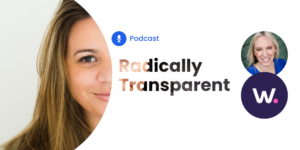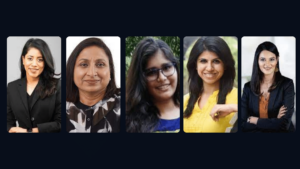The annual summit of Knowledge Management South Africa (KMSA) is being held online next month, on August 24-27. It is described as a Virtual e-Imbizo (imbizo means ‘gathering,’ in Zulu).
Two conference speakers join us in this interview on frontiers and applications of KM: Patricia Mweene Lumba, Senior Knowledge Management Officer, African Union – InterAfrican Bureau for Animal Resources (AU-IBAR), and Janice Scheckter, CEO, Indigo Africa, a platform for connected enterprises.
KMSA is a society of knowledge management (KM) professionals who are passionate about advancing their discipline of knowledge strategies, learning organisations, and collaborative communities. Their activities span workshops, standards, benchmarking, white papers, and case studies.
As media partner for the annual CII Global Knowledge Summit, see also YourStory’s coverage of the editions from 2021, 2020 and 2019, and sessions takeaways from the earlier Bangalore K-Community meetups on case studies (HGS, Unisys) and Work From Home.
Check out our profiles of the Most Innovative Knowledge Enterprise (MIKE) award winners: Dubai Municipality, EY, Tata Steel, Cognizant Technology Solutions, Afcons Infrastructure, Petroleum Development Oman, and Mobarakeh Steel Company (Iran).
YourStory [YS]: During the COVID crisis, what are some good examples you have seen of KM or digital platforms that helped tackle the crisis? What can we learn from them?
Patricia Mweene Lumba and Janice Scheckter [P&J]: From the onset of COVID-19, there has been a reliance on cloud-based video conferencing technology, such as Zoom, Teams, and other platforms, to continue consultative meetings. For an institution like the African Union, this technology has been beneficial to ensure that social and economic activity that was still taking place “offline” can continue.
The move to conferencing technology brings with it much reflection on the power of human interactions and relationships.
For many in Africa, the move to working digitally is a forced initiative. There are still many people who cannot participate fully in online meetings due to poor connectivity. Being online for lengthy periods creates human fatigue and comes with ‘the rush’ to have sessions done on time. This reduces reflection and the full engagement that is often the case in face-to-face meetings.
With COVID-19, there might not have been a better way. However, it raises questions that despite many pronouncements like WSIS, the digital divide still lingers. Additionally human interactions and relationships as content require to be well moderated and, as sources of data, to be monetised.
The role of having an integrated system in capturing tacit knowledge, sharing discussions, and linking stakeholders beyond ‘the meeting phase’ and informal social media networks (e.g. WhatsApp) is crucial to ensuring that content is captured and organised.
With the establishment of over 12 continental networks (with regional presence in all 55 African countries) for women, youth, veterinarian education, legislation, and agribusiness in livestock, fisheries, and aquaculture, the AU-IBAR commissioned an online ecosystem.
Patricia Lumba
Its aim was to address challenges in KM across groups, networks and, organisations, operating across the continent. The online ecosystem was designed on a platform technology that enables groups, communities, networks, and think tanks to collaborate, organise and manage knowledge sharing across multi-disciplinary or cross-functional stakeholder bases.
[YS]: Tell us about the highlights of your KM initiative, in terms of phases, platforms, and activities.
[P&J]: AU-IBAR initiated an online ecosystem platform after a scoping study on livestock value chains as far back as 2018 after forming continental networks. The platform development began in 2020.
The platform development process core team included KM and IT engineers from African Union InterAfrican Bureau for Animal Resources and Indigo Africa; agro-experts to ensure that value is added to achieving a value-chain approach for the ecosystem; and network continental leads.
The development of the platform consisted of the following steps:
- Surveys to obtain an overarching understanding of the ecosystem by undertaking an in-depth overview of the stakeholders, perceived barriers, challenges, and opportunities.
- Implementation of the Community of Practice (CoP) framework by engaging communities and working groups in structured workshops to provide the foundation for the community, and serve as a guideline for taking the community forward (internal CoP role identification and external user identification, utilisation of the platform, and procedures for content/engagement plan development).
- System Development, using the Connect platform. Navigation structures and features were developed taking into account the inputs and contributions.
- Onboarding of stakeholders and profile development.
It is important to add that when one takes the view that KM is a product of a connected ecosystem, the skills that the core team need to encompass must include those of designing, developing, and curating communities. In our case, this meant online communities or virtual CoPs, as noted above.
One of the biggest misconceptions is Build it and they will come. While stakeholders buy in to the requirements of a knowledge community, they don’t necessarily visualise what that may look like, either the process or their engagement.
The truth is that what is needed is a strategic roadmap to building the knowledge community and ensuring that the KM objectives are pursued.
If indeed we believe that knowledge can come from many players within the ecosystem, from grassroots levels through to academic thought leadership, the KM plan must accommodate this.
Highlights of our initiative include working as a client-supplier partnership, and an honest one at that. Not every knowledge community engages at the same speed with the same inputs. The honesty required is to say, We’re listening and learning every day.
[YS]: What were the outcomes and impacts of your KM initiative?
[P&J]: More stakeholders outside established networks join the platform seeking interaction with other stakeholders across livestock value chains. There has been a demand for the use of the platform for project information sharing – with project partners across the continent.
Janice Scheckter
With the understanding that the AU-IBAR KM initiative covers a continent, and a multi-disciplinary and cross-functional community focus on many areas of animal resources, there are certainly early stories or metrics to share. But at the same time, the goal to be build this KM system is audacious in itself.
Virtual onboarding sessions have been held with women’s organisations in beekeeping, youth operating in fisheries, aquaculture and livestock, among many others. People have joined the platform representing some of the 55 countries’ Departments of Agriculture, academics, animal protection activists, and owners of micro agribusinesses.
[YS]: What do you see as the role of KM in a world of increasing AI, platforms, and machines?
[P&J]: The knowledge platform provides several primary values by linking stakeholders and communities in the animal resources sector. These include knowledge management and sharing; engagement and collaboration; agility (the ability for an organisation, group to move more quickly because of methods such as crowdsourcing of solutions); and onboarding (when new players enter a community, the knowledge and engagement history should contribute to speedy alignment into the groups objectives, methods, and activities)
There are secondary value drivers that are expected from this initiative, such as supply chain engagement and management, reporting, and Monitoring and Evaluation (M&E).
AU-IBAR – utilising event functionality as part of the knowledge management ecosystem
[YS]: What changes do you observe in knowledge-sharing behaviours across workforce generations? What are the implications for involving GenNext in leading knowledge platforms of the future?
[P&J]: Knowledge sharing between employees belonging to different generational cohorts possesses unique competencies. The average age of a veterinarian in Africa is 55 years old, meaning many are on the retirement path.
There is no doubt a need to involve GenNext in knowledge platforms and initiatives through mentorship programmes. There is a crucial need to find innovative ways of capturing tacit knowledge through experiences and other creative mechanisms.
Knowledge sharing is ultimately a human process that requires dynamic interaction and good relationships between employees. It requires an excellent programme to be in place to ensure that the needs of each generation’s particular communication style is taken into account.
Having GenNext in the lead of knowledge platform technologies would entail providing translation services to accommodate older populations that may not be so comfortable with platform features.
[YS]: What are some myths and misconceptions about KM that get in the way of organisational adoption?
[P&J]: A common myth is the notion that knowledge can be managed and is an end in itself. People forget that they are a part of implementing and contributing to various techniques and strategies that contribute to knowledge being managed.
As much as technology plays a crucial role in facilitating KM, especially in distributing knowledge, technology alone does not improve an institution’s KM nor make it more competitive.
KM has also not been seen as a change programme, thus resulting in poor adaptation. In our instance, it has to change by striking a balance between informal mechanisms and formal knowledge sharing mechanisms.
Although informal mechanisms, such as conversations, promote socialisation, they also get in the way of extensive knowledge dissemination and effective transfer knowledge across large distributed groups. Informal mechanisms have been seen to involve specific amounts of knowledge waste and inaccessibility due to the absence of formal coding of the knowledge to transfer knowledge to other group members.
AU-IBAR – utilising the discussion functionality for knowledge management
[YS]: What are some cultural and legal challenges that can come in the way of harnessing inter-organisational digital platforms? How can they be overcome?
[P&J]: Cultural differences influence knowledge sharing and harnessing inter-organisational digital platforms. The fact that the team members are not physically together complicates knowledge sharing, as the communication is not direct.
In general, knowledge sharing is strongly influenced by an individual’s perceptions, experiences, and the characteristics of the team environment. It should be the responsibility of leaders to lead by example by creating the ideal team environment for sharing by being sharers.
A good moderator should recognise the different patterns of cultural behaviors to ensure that there is no blockage to knowledge sharing. Sometimes, individuals show a tendency to aggregate information without sharing it. An explanation for that could be the fact that individuals are often competitive instead of cooperative with their peers.
Examples of such differences are formal and informal cultures; deal focused and relationship-focused cultures; fluid time and rigid time cultures; and reserved and expressive cultures.
A governance document and engagement strategy should be in place to recognise these issues and create an environment that promotes knowledge sharing. Governance should also be able to identify the problems of privacy and responsibilities, while an engagement strategy should spell out the platform’s purposes and goals.
[YS]: How do national and international forums like KMSA help you in your journey, and how can the larger community benefit?
[P&J]: KM-related forums both at the national, continental, and international levels have an opportunity to promote learning and enable members to stay abreast of professional trends.
Although KM is a dynamic profession and there is much to learn from existing practices, professionals can also use the collaborative space to heighten and standardise best practices and an advocacy platform for better support of KM with governments and other supporting actors.
[YS]: What are the next steps in your digital platform project? How can such platforms be scaled up across the continent?
[P&J]: The next steps will involve:
- Implementing a content and engagement plan and apply the CLEAR principles (Curate, Listen, Evaluate, Active, and Retain)
- Identifying and woring with champions within the community and outside stakeholders
- Introducing usability features such as mobile apps
- Scaling up of functionalities, e.g. to include a marketplace.
This platform has the technology for scale, but of course scaling will rely heavily on community engagement and evolution.
[YS]: Looking ahead, what are some key emerging trends you see in the world of KM and digital transformation?
[P&J]: While many feel that AI and IoT are something of a “future” trend, they are very much part of our everyday lives. What we see on social media to movies recommended on Netflix, or products that are suggested when we are shopping on Amazon, is what we need to adopt in our everyday KM practices to make knowledge services simpler and streamlined.
With the mileage of tools available, content syndication will be vital in integrating content while at the same time sieving out irrelevant content for users. Hybrid cloud approaches will play a significant role in managing and integrating traditional cloud applications with open source systems.
As computing power continues to be more affordable and the cloud enables access to this computing power and software and frameworks, more and more companies will be able to benefit from AI.
In Africa, our reliance on mobile phones and other hand-held devices – including an ever-growing number of IoT sensors – highlights the need for the multi-lane superhighway that telecommunications companies already knew we would need.
Our experiences with the need for contact and good connection during consultative meetings points to the need for 5G deployments as a vital part of the solution now and in future. As we collectively continue to work and collaborate across borders, the value of 5G will become increasingly mainstream in 2021.
[YS]: What are your tips or parting words of advice on how business leaders should improve their KM or digital initiatives?
[P&J]: Business leaders are vital in ensuring that the right culture and mix of talent to transform into a functional digital business is in place. That requires leaders leading by example in sharing knowledge and supporting any change initiative.
In addition, leaders need to support structures and initiatives that close the skills gaps in the use of technology.
[YS]: Any other comments or remarks you would like to add?
[P&J]: There is no one-size fixed solution to KM. A combination of strategies that encompass both implicit and explicit knowledge needs to be considered when implementing a knowledge management strategy.
There is also a need to consider some mixture or combination of technology, processes, and human and social capital in balancing efforts to manage tacit and explicit knowledge.










